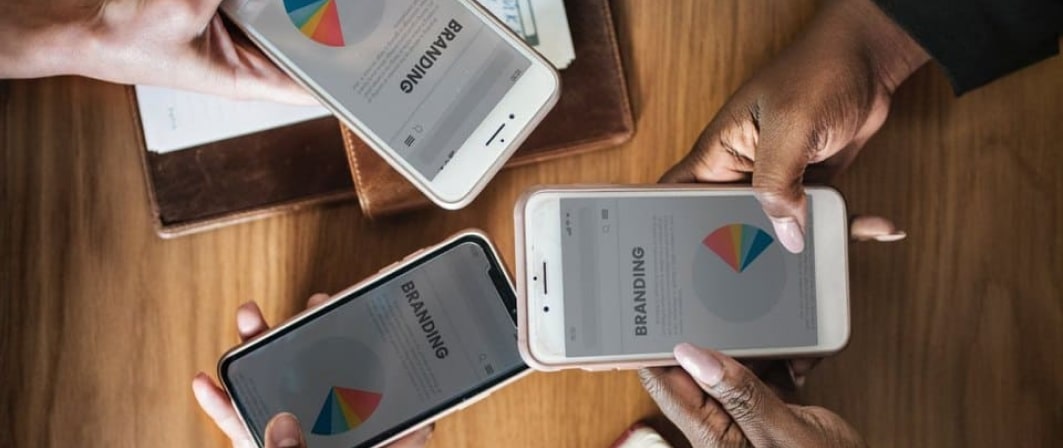Mobile Application Testing: 10-Steps Approach
We’ve tested over 70 mobile apps in the past few years, and we’ve proven that mobile application testing is crucial in order to create a reliable product.
In this post, we’ll go over the entire mobile app testing process step by step. Our background in this field will help you avoid traps and pitfalls.
Testing is a crucial part of a mobile application lifecycle. However, due to all the time and effort it takes to complete the full cycle of app testing, it gets overlooked by developers quite often. In order to create a reliable app that will be enjoyable to use, a product should be tested on every stage.
Essentially, mobile application testing process is similar to website testing. In this post, we’ll cover all the stages of application testing and describe how to test mobile applications.
Mobile testing process
Increasing competition in mobile application markets has forced developers to create a testing road map before starting an actual sprint. A typical end-to-end testing process consists of ten steps that go as follows.
Read an article on how to run performance tests for a mobile application.
Step 1. Outlining the process
Before a developer gets to decide which use cases he’ll be testing manually or automatically, it’s better to outline the list of all the cases to be tested. Create a test plan for your mobile application with all the use cases you’d like to test and then briefly describe the tests you intend to run and the expected result for the sprint.

Step 2. Choosing the type of mobile tests to run
Deciding whether a test will be manual or automated is the next step in the mobile testing process. While it’s a challenging choice to make, here are a few ways to decide whether testing mobile applications should be automated or manual.
We suggest you use automated testing in the following cases:
- You run a use case frequently. If there are any routine tests you’re running on a regular basis to check the basic functionality of the app, consider automating them. In the long run, automating routine tasks pays off as you save a lot of time and avoid potential errors caused by repetition.
- If a test has a predictable outcome. Test automation is a go-to choice for any conditional testing (‘if a user clicks the button, then the tab opens’). When a test has a predictable result, there’s little need for a developer to actively monitor the outcome and oversee the testing process.
- Automate tests on device fragmentation. There’s a huge variety of devices and screen dimensions. In order to ensure your app’s compatibility with such an array of hardware, a lot of tests are needed. Conducting this much testing manually is too challenging, so it’s better to write manual tests for different operating systems or screen dimensions.

Keep in mind that smaller tests are easier and more efficient when automated. For instance, you can consider running automated unit testing in order to save time, but it’s still better to go manual when testing the system back-to-back.
Step 3. Preparing test cases for different functionalities
The next step in mobile app testing is defining the cases you will be writing tests for. There are two approaches to this stage:
- requirement-based testing: the performance of specific app features is tested;
- business scenario-based testing: the assessment of the system is conducted from the business perspective.

Defining the test cases for mobile application depends on the type of test you want to run as well. All application tests are divided into two broad groups: functional and non-functional.
Functional testing includes:
- Unit testing;
- Integration testing;
- System testing;
- Interface testing;
- Regression testing;
- Beta/acceptance testing.
Non-functional testing includes:
- Security testing;
- Stress testing;
- Volume testing;
- Performance testing;
- Load testing;
- Reliability testing;
- Usability testing;
- Compliance testing;
- Localization testing.
After you’ve decided which type of test you want to run on the app, it’s time to move on to the actual testing process.
Step 4. Manual testing
While there are developers who favor automated testing over manual, when it comes to Agile testing framework, it’s recommended to use the combination of manual and automated testing.
When a developer kicks off a testing sprint according to the mobile app test plan, it’s better to start off with exploratory manual testing. Also, manual testing doesn’t require initial investments, which is another reason to start it early on.
Make sure you keep consistent logs of all the testing sessions in a Word or Excel document. If you have a possibility to engage a few testers simultaneously, consider running manual test sessions simultaneously to save time for the later stages.

Step 5. Automated testing
After you’ve conducted a few manual testing sessions and detected the patterns of outcomes and the frequency you need to run a test with, consider automating the most routine or predictable ones.
Also, when it comes to performance testing, load testing, stress testing, or spike testing, running these tests automatically is a commonplace practice.
When it comes to testing automation, selecting the right tool is essential. There are a lot of choices in the market, so here are a few points you might want to take into account while looking for the right fit.
- The testing tool of your choice should support a wide range of platforms. You might need to test your app for iOS or Android, run tests for different programming languages – .NET, C#, etc. Being constrained by testing tools can really be a hindrance to the entire testing project, so it’s better to have a wider range of platforms available, even if it seems you don’t need all of those tools at the moment.
- It should have rich features. It’s very convenient for a developer to have a tool that supports recording and playback of tests. Having said that, make sure you can write automated tests manually, as sometimes it’s the only option that allows you to target the scope of the app precisely.
- Tests are reusable and change-resistant. Tools that allow developers to create reusable, easy-to-maintain tests are highly helpful, as you can save a lot of time while testing new projects.
Step 6. Usability and beta testing
There’s a common misconception that beta-testing can substitute for usability testing, as they pinpoint the same issues. Our experience shows that it’s worthwhile to perform both, though.
- Start a sprint with a usability testing session. During the design stage, it’s highly helpful to get some exposure from real users. With a usability test, developers get to showcase potential features and narrow down the list to those that were well-received by the users.
- Beta-testing, on the other hand, is a better fit when a product is ready, and you want to get the feedback on the entire system before launching it. Similarly to usability testing, beta-testing allows developers to understand which features users will need, which is helpful when deciding what direction the app should take in the future.
All in all, both usability and beta testing are worth running. However, there’s the difference between the two: usability testing mainly indicates if a feature works, while beta-testing provides a developer with an understanding on whether people will be using a particular application feature frequently or not.

Step 7. Performance testing
After you’ve tested the performance of your applications feature-by-feature, it’s time to assess the performance of the entire system. That’s when performance mobile testing comes into play. It helps to evaluate the speed, scalability, stability under the high amount of traffic, and it checks the app for system errors or discrepancies.
Before starting your app’s performance testing, determine the capabilities the application is supposed to offer, as well as its intended use cases and the favorable conditions under which the system would strive.
While performance testing doesn’t normally come until later in the overall testing framework, starting it early on and running performance testing sprints along with unit testing is a solid strategy as well.
In order to assess the efficiency of performance testing, be sure to set realistic benchmarks. While it’s tempting to evaluate the app from a developer’s perspective, try to distance yourself from it as much as possible and look at the app as its user.
Step 8. Security and compliance testing
There are a lot of data security guidelines that mobile apps have to meet. Depending on your app’s features, there are different data security standards to be implemented. Here are the most common security guidelines:
- PCI DSS – the set of data security requirements for mobile applications accepting payments;
- HIPAA – security practices for mobile healthcare applications that collect, store, or process medical data;
- FFIEC – a set of guidelines that require banking and financial institutions to install control and security measures to protect sensitive financial data.
When conducting security testing, it’s important to pay attention to the industry standards and to translate these guidelines into practical measures. Also, a security tester should be ready to deal with exceptions and unpredictable situations. Each security practice has to be documented meticulously in case it needs to be reviewed by a controlling organ.
Step 9. Final version release
After everything is done, developers run an end-to-end testing sprint to ensure the application works properly on the back-end and server level and is ready to be uploaded. If no major bugs are identified, developers release an application to app stores. In case there are any issues in the app, they get fixed and the end-to-end testing sprint is repeated.
Step 10. How can PFLB specialists help with mobile testing?
We are a software testing company that provides testing services and consults on how to do mobile testing for startups and SMEs. We offer quality assurance services to companies in retail, finance, education, entertainment, healthcare, and many other industries.
Here are some of the services PFLB can help you with when it comes to mobile application testing:
- Manual testing
By conducting tests under human supervision, the team of PFLB is capable of providing customers with deeper insights that would normally be overlooked during automated tests.
- Usability testing
This includes gathering a focus group, creating a survey for test scenarios, conducting individual testing sessions with each participant, and analyzing the results. With usability testing by PFLB, businesses are able to raise the effectiveness of the system workflow and increase user satisfaction with the application.
- Load back-end testing
Its aim is revealing bugs and system discrepancies by increasing the traffic load on the system. For load testing, we use common protocols, support system’s proprietary protocols, systems with complex encrypted protocols or asynchronous calls, as well as web services and service buses. We provide customers with a summary of a testing sprint as well as recommendations on resolving the issues detected during load testing.
- Security testing
By simulating directed attacks on the system, testers are capable of detecting its weak points and creating the best strategy to improve the level of data security. First, we conduct thorough research to get to know the system. Then the pentest is concluded, and the detected system vulnerabilities are carefully analyzed. Our testers write scripts and exploits and offer ways to apply them. The records of the test along with recommendations from the team are gathered in a report for the development team so that they can further improve the product.

Have a Project in Mind?
We have been working on performance testing projects since 2008.
Drop us a line to find out what our team can do for you.
Conclusion
Mobile application testing is an essential part of the entire application life-cycle. Successful testing ensures efficient and enjoyable performance of the entire system, as well as compliance with security guidelines.
If you’re looking forward to testing a mobile application, look no further than PFLB. We’ve tested hundreds of software projects across various industries – that’s why we are always updated on new trends and practices in the field. Take a look at our services to choose the one that fits you best. Are you in to discuss your project with us? Contact the team of PFLB – we’ll reach out to you right away!